This brine is for a pork shoulder (butt) but would work for basically anything. The flavors used are some very basic aromatics. The real power of brine is the salt.
Brining is a popular technique used by many barbecue enthusiasts and pitmasters. It involves soaking meat in a saltwater solution before cooking. For cuts like pork butt, brining is said to make the meat more flavorful, tender and juicy. But is brining pork butt necessary? Or are there downsides to consider? Here is an in-depth look at the pros and cons of brining pork butt.
What is Brining and Why is it Used?
Brining pork means letting it soak in a saltwater brine solution for hours before cooking. The brine is typically made by dissolving salt and sometimes sugar in water, along with desired seasonings.
The main goals of brining include:
- Improving moisture retention so meat stays juicier
- Allowing seasonings to deeply penetrate the meat
- Enhancing and seasoning the flavor throughout
- Tenderizing the meat by breaking down muscle fibers
The salt in the brine helps meat retain moisture while seasonings infuse it with extra flavor. This is why brining became a popular technique for roasts hams and other large cuts.
Potential Benefits of Brining Pork Butt
There are some good reasons why brining a pork butt may be beneficial:
-
The salt helps it retain moisture so the pork stays juicier after hours of smoking.
-
Herbs, spices and aromatics in the brine infuse the meat with extra flavor.
-
It allows seasonings to fully penetrate deep into the thick cut.
-
The brine tenderizes the meat by dissolving proteins.
-
Curing salts in some brines preserve and enhance the pork flavor.
-
Brining provides insurance against drying out this fatty cut.
So when done properly, brining can positively impact the flavor, moisture and texture of a smoked pork butt.
Reasons You May Not Need to Brine
However, brining does come with some potential drawbacks:
-
Pork butt is already well-marbled with fat, which helps keep it moist.
-
Too much salt can make the pork overly salty and inedible.
-
Many rubs and injections can achieve a similar flavor impact.
-
Brining requires planning ahead and extra time.
-
The brine dilutes the pork’s natural flavor.
-
Moisture retention may not be an issue for fatty pork butt.
-
Juiciness can be achieved by cooking low and slow without brining.
So for well-marbled cuts like pork butt, brining may not offer significant advantages over other methods.
Tips for Brining Pork Butt
If you do decide to brine your pork butt, follow these tips:
-
Use a ratio of 1 cup salt to 1 gallon water as a basic brine.
-
Add sugar, spices and aromatics for more flavor.
-
Submerge the pork fully in the brine. Weigh it down if needed.
-
Brine for 12-24 hours. More time doesn’t necessarily mean more flavor.
-
Rinse and pat the pork dry thoroughly before adding rub.
-
Allow extra time before cooking for the brining and drying process.
With the right techniques, you can get benefits from brining without overdoing it.
Should You Brine Bone-In Pork Butt?
Bone-in Boston butt or pork shoulder often benefits from brining. The bone makes the meat harder to fully penetrate with seasoning. Brining helps infuse flavor all the way through this thick, tough cut.
Bone-in pork butts don’t have much connective tissue. So brining also helps tenderize for pullable, fork-tender results after smoking low and slow.
Should You Brine Boneless Pork Butt?
For boneless pork butt, the need to brine is much less:
-
Boneless butts are easier to directly season and inject.
-
There is no tough bone area that needs special attention.
-
Lipids within boneless butts keep them moist already.
-
Brining may make them over-salty without a bone to soak up brine.
If brining boneless butt, reduce salt, brine for less time and rinse well before cooking.
Alternatives to Brining for Moisture & Flavor
Instead of brining, consider:
-
Injecting with a marinade or broth.
-
Rubbing the night before to season.
-
Dry brining by heavily salting the surface.
-
Smoking low and slow – the key for juicy pork butt.
-
Spritzing and mopping while cooking.
-
Resting before slicing into it.
These all infuse flavor without lengthy brining.
At the end of the day, brining pork butt comes down to personal preference. For bone-in cuts, brining does offer some benefits. But for well-marbled boneless pork butt, it may not be worth the time and effort required. Pay close attention to salt levels in any brines used. And explore alternative methods too. With the right techniques, you can get incredibly moist, fall-apart tender and flavorful smoked pork butt without brining at all.
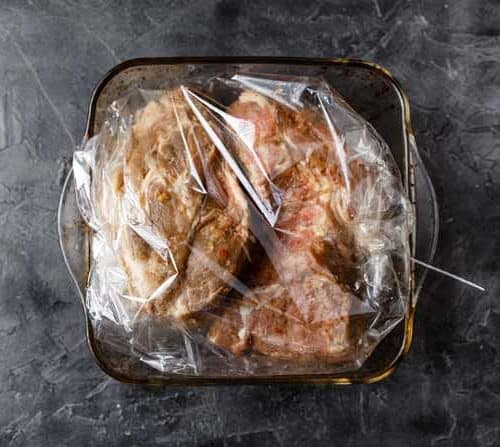
How To Prepare The Brine
Some brine recipes will tell you to use hot water. This is not necessary at all. Feel free, but you can’t add your meat to the brine until it cools.
Do what you like, but the salt and sugar dissolve just fine in room-temperature water.
In a large bowl or pot, dissolve the kosher salt and sugar in 10 cups of water.
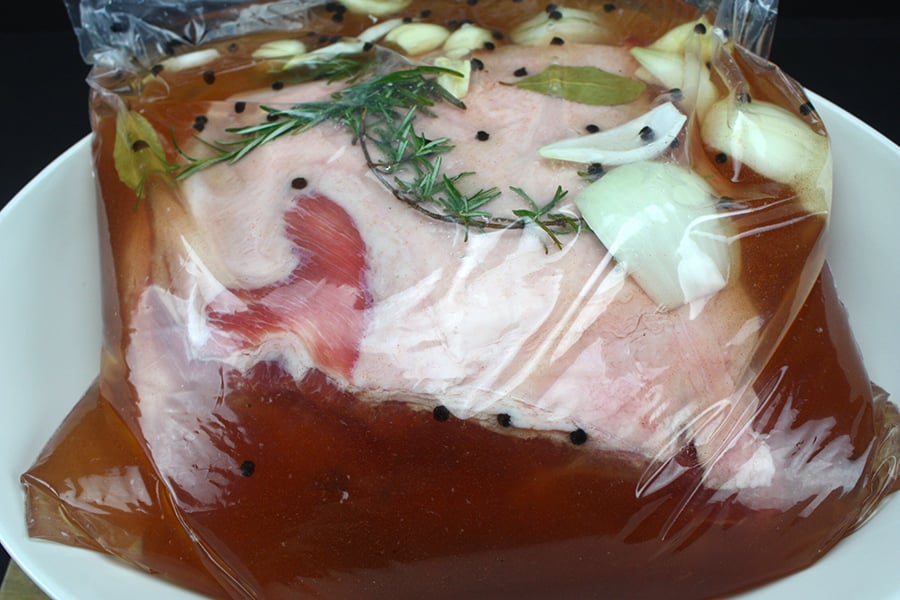
Once the salt and sugar are dissolved, get yourself a receptacle for your meat. For us, we like to use a large ziplock bag.
That way, we can remove all the air and keep the meat fully submerged in the brine.
Put the pork in what you’re using, add all the remaining ingredients, and stir. Cover the meat and refrigerate.
If you use a plastic bag, put it in a roasting pan or a bigger bowl in case it leaks.
For our 8 pounds of pork, we’re going to marinate it for 18 hours, but overnight is fine. Smaller cuts of meat require less brining time.
I would not recommend going over 24 hours with the brine. This might produce a too-salty experience for some.
Remove the pork from the brine and pat dry with paper towels.
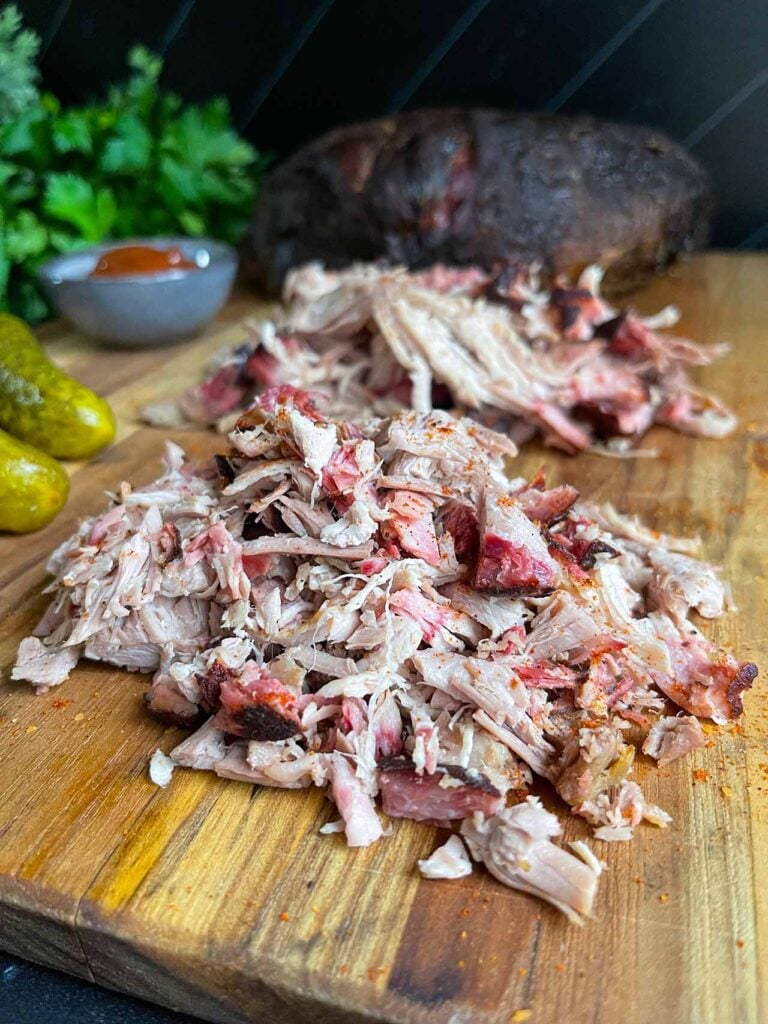
Once it’s done brining, you’re ready to cook the meat as you will. For us, we’ll be applying a very tasty rub and doing up a fabulous smoked pork butt.
The main ingredient of every brine is salt. This one ingredient is what is going to flavor your meat. This is also what binds to the protein in the meat and stops the water from escaping while it’s cooking.
So it’s really up to you. The other things in the brine are the flavors that are added with the salt.
- Adding herbes de Provence, which are also known as Provencal herbs, makes the spice mix more typical of the southeastern France region. It goes perfectly with pork.
- It is made up of onion, celery, bell pepper, and garlic, which are known as the “trinity.” This makes everything pop, and the tastebuds come alive!.
- Other fun spice blends work well with this brine. It would work well with Honey Habanero, a citrus mojo spice blend, or any kind of sweet heat rub.
Pork butts should brine overnight for up to 24 hours. Smaller cuts of pork should go from 6-18 hours, depending on their size.
The salt enters the pork and binds to the protein. During the cooking process, this prevents the meat from releasing its water, thereby keeping the meat juicy. It also adds the flavors of the entire brine to the meat, not just to the outside.
No. You may need to remove things from it, such as peppercorns or other large items.
Yes. Refrigeration is required while brining.
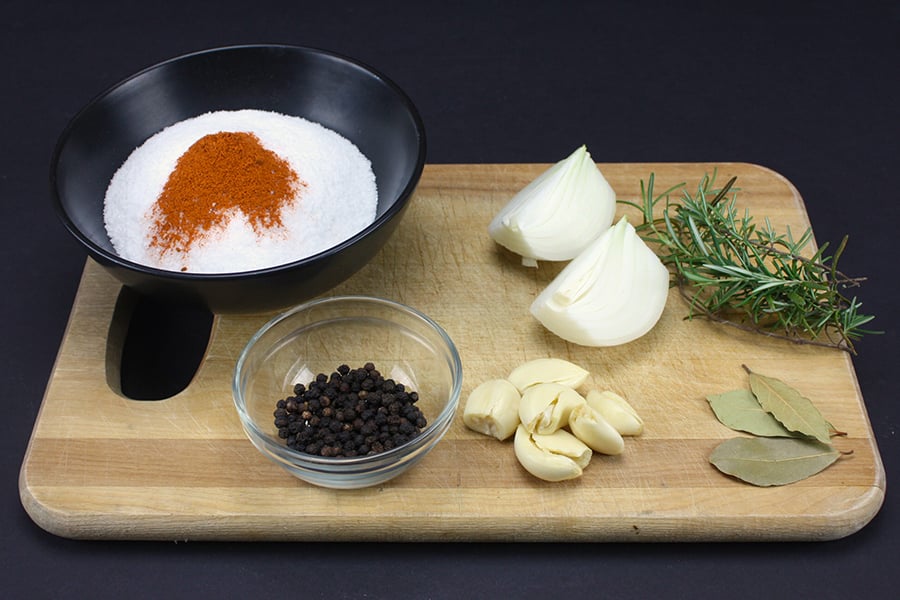
Why The Recipe Works
Brining meat makes whatever you’re cooking come out all the juicier.
I am not going to get into the technical aspects of osmosis and salt ions . let’s keep it easy. Brining prevents dehydration while cooking, which means a much moister piece of meat.

A basic brine is made of salt, sugar, and some aromatics. We use rosemary, onion, bay leaf, peppercorns, paprika, cayenne, and garlic for this pork shoulder brine.
You can add whatever flavor profile you like.
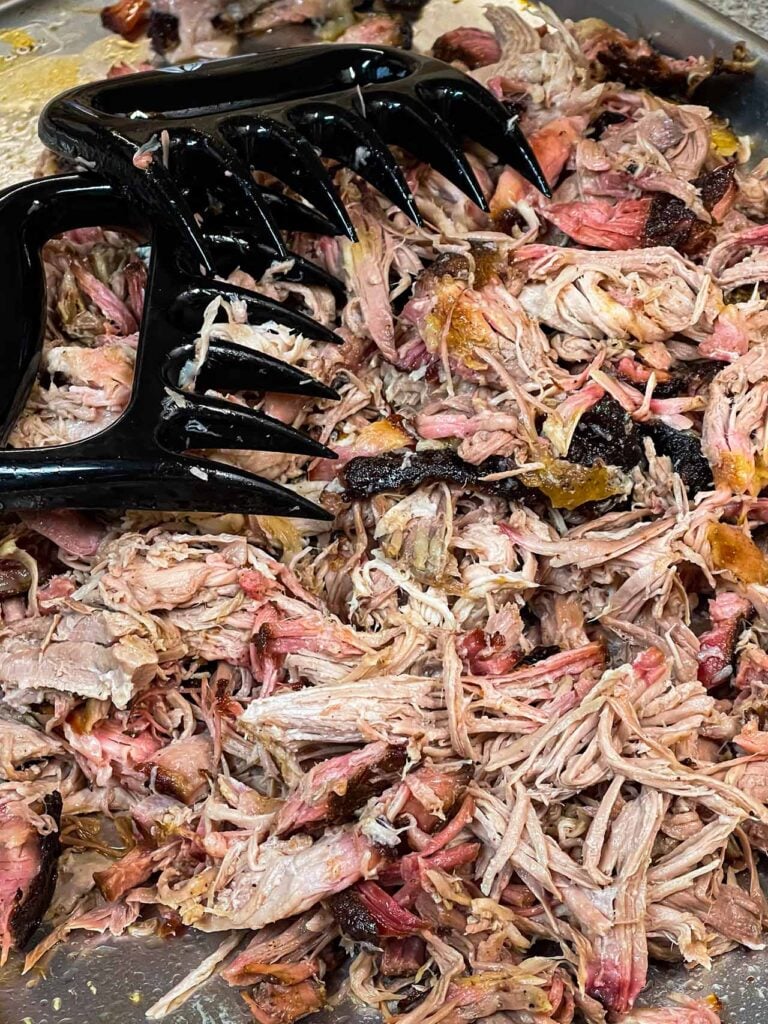
Should You Brine Pork Butts — SIDE by SIDE Taste Test – Overnight Smoked Pork Butts on Pellet Grill
FAQ
Should I brine my pork for pulled pork?
Is it worth brining pork?
Should pork be brined before smoking?
Can pork be brined too long?
